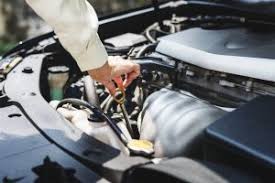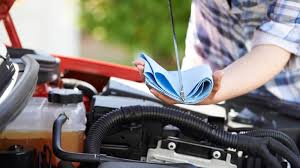Look for these 5 things when buying a used engine
You must decide if your car is worth fixing. Sometimes it is. Other times it makes more sense to take the money you’d spend on a new engine and invest it in a replacement vehicle instead.
Only you can decide which option is best for you.
If you do decide to fix it, you don’t have to pay full retail price for a new engine. You can save a bundle of money by buying a used one. That’s because used car parts cost much less than new ones. Buying a used engine can help get you back on the road without spending as much in car repairs.
So if you’re going to buy a used engine, make sure it’s a good one.
Here are five specific things you want to know before purchasing. These will help reduce your risk when buying a used engine.
1. Is the Company Reputable?
There are plenty of junkyard scams going on. Before purchasing anything from a salvage yard, take a few minutes to look them up online. Check for any information you can find, including certifications, awards, and reviews. You want to make sure you’re dealing with a reputable company and not a couple of guys selling auto parts out of their garage. Use common sense and look for any red flags. If the price or value seems too good to be true, it probably is.
2. What’s the Mileage on the Engine, and How Old Is It?
The mileage on the engine makes a difference in its life expectancy. While engines with more miles will typically cost less, they may not last as long. Your ideal motor will have about 15,000 miles per year. With just a little math, you can figure this out by dividing the total number of miles on the engine by its age in years.
3. Is It Tested?
Often when a vehicle is totaled from a wreck, the engine is still working great. But, not always. Especially if the damage to the vehicle was in the front, or there was a fire under the hood. You have two ways to find out about the condition of the engine. You can purchase the engine and install it and see if it works. Or, you can buy an engine that’s been tested. The second method is obviously easier.
There are two main methods of testing engines. The first is a run test. This can be done by a certified technician who will start the engine and perform tests on the engine whether it’s on a stand or still attached to the vehicle. The second method is a compression test. This is utilized when the car can no longer start, and can tell you a lot about the condition of the engine. Ask about testing before you purchase an engine, especially if you’re purchasing one without a warranty.
4. Will This Engine Work in My Vehicle?
You don’t need an identical match to find a compatible engine. Often manufacturers used the same engine for several years, or in different models of cars. Do your research and make sure the used engine you are looking at will work in your car. Tear-A-Part has a proprietary system at each of their locations that can help you pinpoint which models will work.
5. What’s the Warranty?
You don’t want to purchase a used engine without a warranty. Check around and see what is covered, and how long the warranty lasts. Make sure to ask if there are any conditions on the warranty. Then make sure you get this information in writing. If it’s on the bottom of your receipt, hang onto your receipt! This way if you get the engine installed and something is wrong with it, you will be able to return it. You really don’t want to be stuck with an engine that doesn’t work.

Should You Consider a Car With an Engine Replacement?
If you’re interested in buying a used car, you may have run across a vehicle listed for sale that’s had an engine replacement. Although this is more common in older used cars, some newer vehicles have also had engine replacements for one reason or another. So should you consider a car with an engine replacement? We have some tips on the subject.
The Pros
There’s one major benefit of a car that’s had an engine replacement: Assuming the engine was replaced with a new engine, or even merely a newer engine, it means the engine has less use than the car’s original powerplant. That can be a good thing for long-term reliability.
For example: Let’s say a car received a brand-new engine at 40,000 miles. In that case, the engine will have only traveled 25,000 miles when the odometer reaches 65,000 miles — and that means the car may last a little longer than a car with its original engine, since the newer engine hasn’t seen as much use. Find a used car for sale near you
The Cons
But there are a few drawbacks to a car with an engine replacement. For us, the biggest drawback is the question of why the engine was replaced in the first place. In most modern cars, engines are designed to last the life of the vehicle — and an engine replacement at 20,000 miles, 30,000 miles or even 100,000 miles would have us wondering exactly what the previous owner was doing that damaged the engine so badly that it had to be replaced, not repaired.
Another question: If a car had an engine replacement, who did the work? Replacing an engine isn’t a very easy job, and it’s best left to a very skilled mechanic. Yes, it’s true that some cars receive engine replacements under warranty, which means the repairs are carried out by trained dealership technicians. But others receive engine replacements from less skilled workers, which could lead to problems down the line if the replacement wasn’t performed correctly. Our advice: Be sure to get the paperwork from any engine replacement to ensure the work was done properly by a trusted mechanic or repair shop.
Engine Replacement Labor Cost
On a typical engine, the shop time quoted will be 10 to 12 hours. On an easy engine with a skilled mechanic, you may get quoted as little as 8 hours, while bigger jobs may require as many as 15 hours. The majority of quotes should fall in the first time frame. Determine the labor costs by multiplying the quoted number of hours by the shop rate. The shop rate can vary greatly, from as little as $90 per hour to over $150 per hour. So using a low-end shop rate of $110 and a high of $150, the labor on a typical engine replacement can run anywhere from $1,100 to $1,800.
If You Want the Fix: 6 Steps to Pay for Car Repairs
Decided to go ahead with the repair? Your next issue is paying for it—because it’s probably going to cost a not-so-nice chunk of change. But what if you don’t have the cash on hand to pay the bill? That’s okay. Here are six steps to finding the money you need to fund your repair:
Step 1: Shop around.
Don’t accept the first quote you’re handed. Get the initial diagnosis from a trusted dealership or a larger mechanic shop, but don’t assume their price is the price. The majority of your cost is probably not parts, but labor. And it’s almost always higher at larger, more established shops.
To find a reliable mechanic for a lower price, ask a few friends where they go for trustworthy work. Then call around to find the best price. While you’re on the phone, ask about any current discounts and specials they might offer too.
Step 2: What can you do yourself?
Maybe you need new brakes, but you also need to replace the door handle that came off this morning.Why not get the brakes fixed at the shop, and find an after-market replacement for your door handle online? Then watch a YouTube video and fix it yourself. Just be sure to follow the directions very carefully.
Step 3: What can wait?
If the estimated repair is still out of your comfort zone, ask the mechanic what needs to be fixed now and what can wait a few months. Don’t skip important safety features like brakes, tires and timing belts. But you can live without automatic windows for a while.
Step 4: Make a budget.
Let’s say you’ve lowered the repair price as much as possible. Now it’s time to find the cash to pay your bill. We recommend making a zero-based budget before you start overturning your couch cushions in search of loose change. You can make a budget in about 10 minutes with our favorite budget app, EveryDollar. It’s free, and it’s a way less labor-intensive than digging through your sofa.
Step 5: Move your money.
If you’re still coming up short, no problem. Simply dial your budget back in nonessential areas like restaurants, haircuts and new clothes. You can also divert your savings temporarily. And as a very last resort, you can use your emergency fund for absolutely necessary repairs. Just restock it as soon as possible.
Step 6: Budget for future repairs.
Ensure this issue doesn’t happen to you again by creating a line item in your budget for future car repairs and maintenance. That way, the money will be there waiting for you when you need it—and you will.

If You Want a Replacement: Should You Lease, Buy New, or Buy Used?
Let’s say you’ve decided it’s not worth it to repair your current car. You’re ready for something else. While it’s tempting to want your next car to be new and under warranty (read: no repairs!), the last thing you want to do is head to the nearest new car dealership. Here’s why:
New Cars.
The depreciation on a new vehicle is jaw-dropping. A $20,000 car will be worth about $8,000 in five years. That’s a 60% decrease! Even after just one year, the car could go down in value as much as 25%. So unless you have a net worth over $1 million, don’t buy new—ever. Let someone else absorb the depreciation.
Leased Cars.
A lease is simply the most expensive way to operate a car. Every month, your lease payment goes to cover the car’s depreciation plus the dealer’s profit. At the end of the lease, you have zero equity in the car, but you do have the option to buy it. That may or may not be a good deal since the purchase price is set at the beginning of the lease and isn’t based on the actual value of the car at the end of the lease. Then there are the fees—a fee you’ll pay if you exceed a certain number of miles or have excessive wear and tear on the car, a fee you’ll pay if you decide not to buy the car when your lease is up, and a fee you’ll pay if you do decide to buy it. All that adds up to a good deal for the dealer—not for you.
Used Cars.
Your best bet is to buy an affordable, used car with the money you have saved (combined with the cash from the sale of your current car). That way you own the car, rather than it owning you. Used car doesn’t mean crap car; it just means you’re smart enough to let someone else pay for that initial drop in value. Buying used is the only way to go.